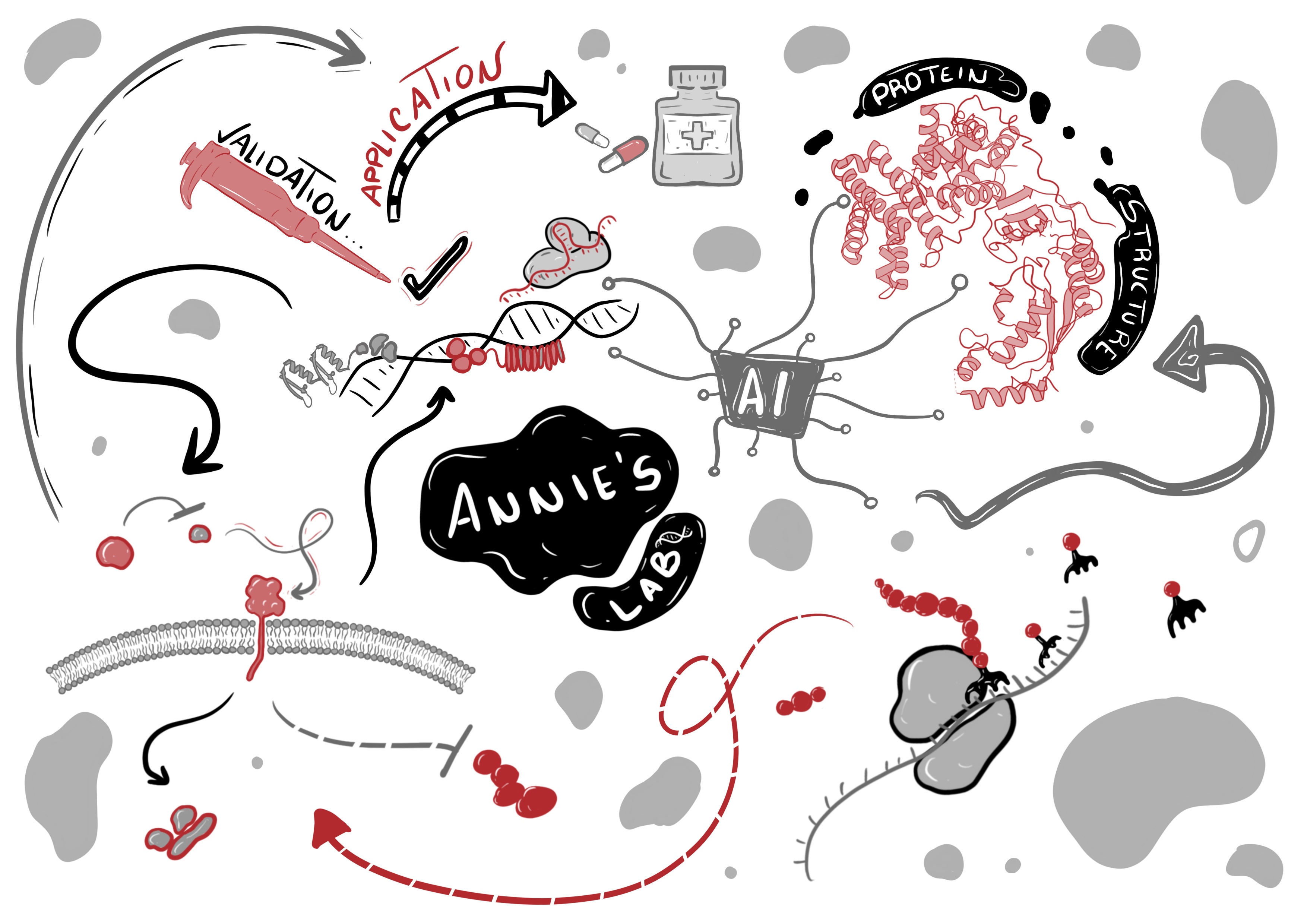Project 1. Development of novel genome editing tools through AI-based protein structural prediction
The development of novel genome editing tools through AI-based protein structure prediction involves leveraging artificial intelligence (AI) techniques to predict the three-dimensional structure of proteins and using that information to design new genome editing tools.
- Protein Structure Prediction Using AI: AI-based algorithms analyze the primary sequence of the target protein (i.e., the order of amino acids) and predict its three-dimensional structure. These algorithms may employ a variety of techniques, including neural networks and deep learning, to generate accurate predictions. They learn from known protein structures and their associated sequences to make predictions for unseen protein sequences.
- Structural Analysis: Once the predicted protein structure has been obtained, it is further analyzed to understand its functional regions, binding sites, and potential interaction sites with the DNA.
- Designing Genome Editing Tools: With the predicted protein structure and knowledge of its functional regions, we can design novel genome editing tools. Our work involves modifying existing tools or creating entirely new ones that can interact with the target protein in a precise and efficient manner.
- Experimental Validation: The newly designed genome editing tools are synthesized and tested in the laboratory to assess their functionality. These experiments help validate the accuracy of the protein structure prediction and the efficacy of the new tools.
- Iterative Refinement: The feedback from experimental validation is used to refine and improve the AI models used for protein structure prediction. This iterative process helps to enhance the accuracy and reliability of the AI-based predictions and advances the development of genome editing tools.
By combining AI-driven protein structure prediction with experimental validation, we can accelerate the discovery and development of novel genome editing tools. These tools have the potential to revolutionize various fields, including medicine, agriculture, and biotechnology, by enabling precise modifications of DNA sequences for therapeutic purposes, disease research, and crop improvement.


